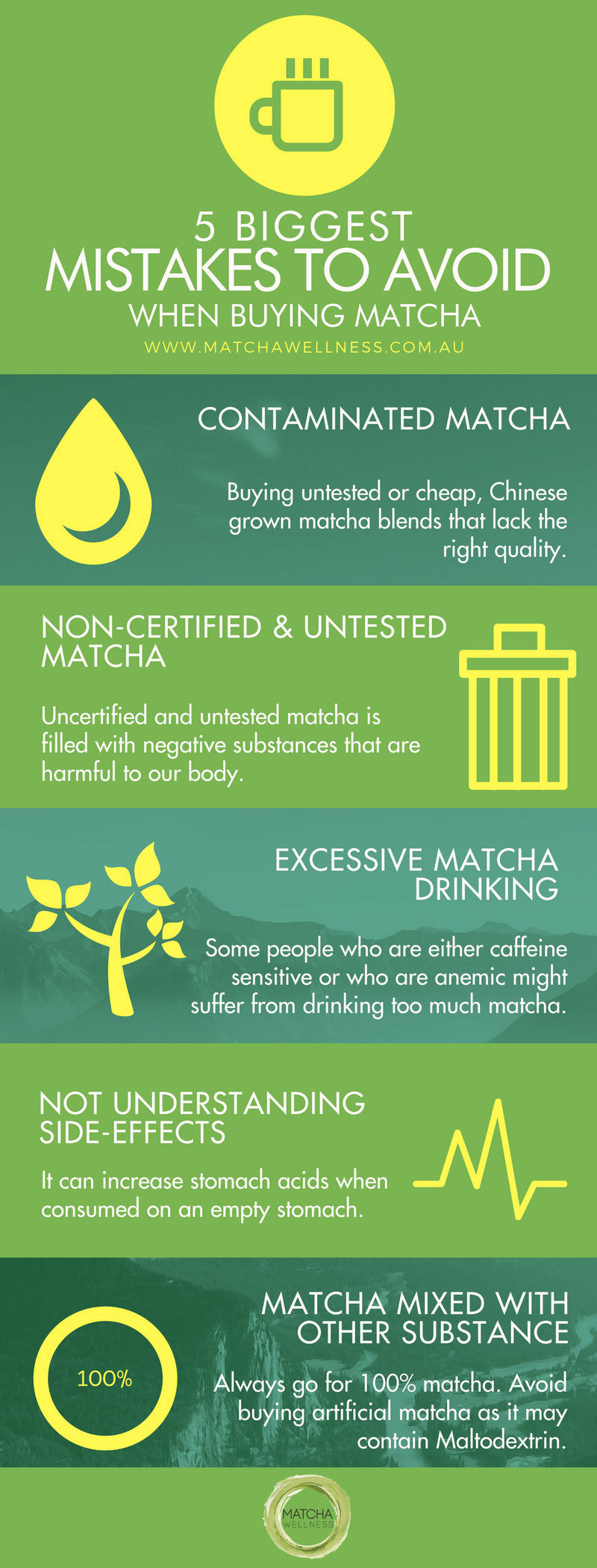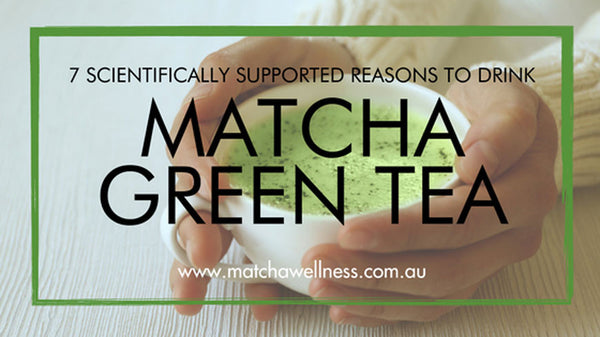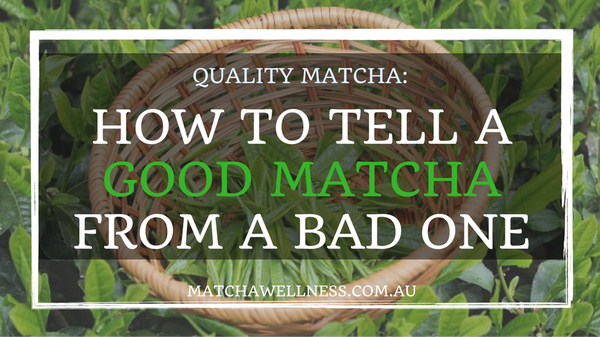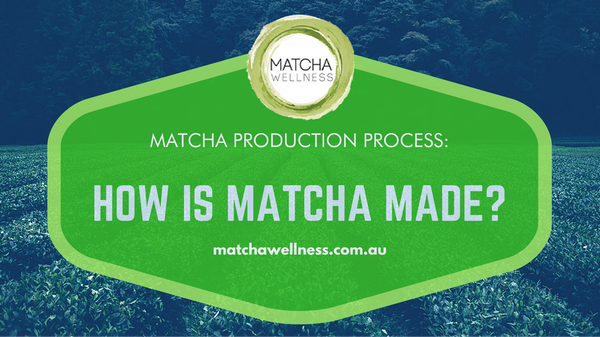5 Biggest Mistakes to Avoid when Buying Matcha
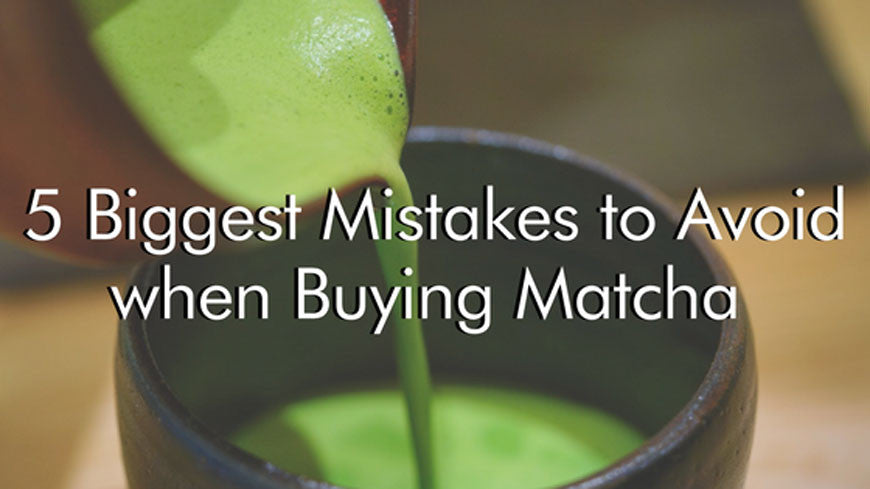
5 Biggest Mistakes to Avoid when Buying Matcha
When it comes to buying matcha tea, one of the biggest issues people can have is finding the right product for them. With so many options to choose from, it becomes very easy to get lost in the confusing world of matcha tea. To help you get around this irritating problem, you should look to understand these major mistakes. By following along with these guidelines, you can avoid making these errors when it comes to enjoying your matcha tea.
Mistake #1: Contaminated Matcha
One of the major mistakes people can make is drinking matcha tea that is contaminated with lead. This comes usually from buying untested or cheap, Chinese grown matcha blends that lack the right quality. The USDA limitation is just 2mcg of lead per gram when brewed. Some major brands, though, do have lead problems.
With 32% of Chinese blends exceeding the limit, you should be careful about where you are buying your matcha. To avoid excessive lead usage, buy proper brands and use a paper filter to minimize the amount of lead that passes through.
Mistake #2: Non-Certified & Untested Matcha
As previously mentioned, another common mistake that can be made stems from buying non-certified matcha tea, which may do more harm than good to your body. Unfortunately, a lack of certification and care for the matcha itself means that many teas are filled with negative substances we really do not want to be entering into our systems, such as pesticides. Indeed, untested matcha or uncertified blends can have devastating consequences. A Greenpeace study found that, shockingly, 14 of the 18 samples of green teas used in research are contaminated with pesticides, which European Union (EU) considers hazardous to health that could harm unborn children or even cause genetic issues. Still, they are used with alarming regularity in tea brands.
Your main solution for this is going to be quite simple. Building on the above, you should do everything that you can to avoid drinking the majority of Chinese blends, and instead turn to Japanese blends. Japan is far stricter in terms of regulation and testing, and is going to be much less likely to avoid the kind of problems that Chinese blends might cause.
Indeed, Japan is far stricter than the likes of EU and US, so you can feel pretty safe that any Japanese tea blends are going to be clear of the majority of pesticide problems.
Mistake #3: Excessive Matcha Drinking
A significant issue that many people find themselves dealing with when it comes to tea consumption, though, is how much matcha they drink. Since it’s so good for us, some people are happy to indulge on it instead of a glass of water. You should, though, always look to provide a balance to the amount of matcha that you are taking into your system.
The time you need to be certain about your ability to drink or handle Match tea comes from your own sensitivities. Some people who are either caffeine sensitive or who are anemic might suffer from drinking too much matcha.
Also, any pregnant women should avoid taking more than a single cup of matcha per day. While there is a major amount of positive results from drinking matcha, you still shouldn’t overdo it in order to avoid any of its side effects. This means that there tends to be a range of issues with green tea and the catechins it releases, such as decrease in iron absorption from food. Therefore, if you suffer from iron deficiency, it would be best to consult a health professional before making any more decisions about whether matcha is something that you should be drinking quite as often.
Mistake #4: Not Understanding Side-Effects
One of the most common problems with drinking matcha tea, though, is a lack of care for the side effects. Some of the most common matcha side effects include:
- Stomach Issues. Some people can find that a large amount of such a drink can cause them to have stomach cramps. Never drink green tea on an empty stomach as it increases stomach acids. Also, it can cause constipation if consumed in excess, so be careful with consumption.
- Drug Interactions. A rather unsettling issue that can be caused by the mix with medicines. Make sure that no medication that you are taking is going to have any problems with green tea.
- Sensitivity Spikes. Another big problem that people can suffer from is caffeine sensitivity. Any more than 200mg of caffeine per day is likely to make you feel confused, nervous, dizzy, and irritated.
- Iron Intake. As mentioned above, one of the primary problems with taking matcha tea is that it can cause iron problems. Consume more foods that help combat iron deficiency – red meats and lemons that aid in the absorption are your best bet.
Mistake #5: Matcha Mixed With Other Substance
The last problem that you want to get out of the way, though, is the issue of buying less than 100% matcha. Many people look to save money by buying cheaper brands. These tend to be mixed with weird products, though; anything from rice and sugar to dangerous fillers can be used to bulk up the package. Therefore, anything less than 100% Matcha should be avoided. One of the main reasons why is to avoid one common ingredient in less than pure matcha: Maltodextrin.
A dangerous product to have in your body, many blends will use Maltodextrin as a major part of the process for filling the tubs out. It’s a solution that increases weight artificially, is a low-calorie sweetener and can be used in the blend to prevent a caking experience from occurring. However, lesser brands tend to use filler like this to bulk it up, removing the goodness of matcha and replacing with empty calories.
Not only will it taste rather different and not have that classic matcha taste, but it’s also a carbohydrate we should avoid taking in too often. It’s worse for us than sugar, and for that reason any matcha teas that contain even a relative amount of it should be avoided. 100% or nothing, that’s our motto.
With this in mind, use this list for inspiration and guidance to avoid the pitfalls of purchasing bad matcha in the future.
